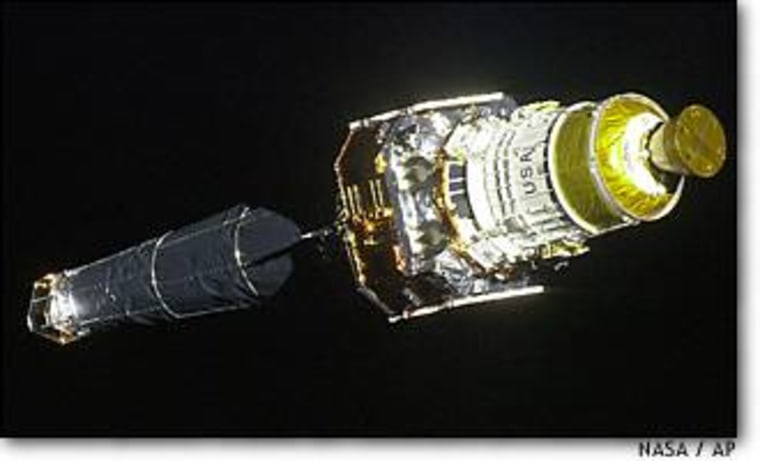Harvey Tananbaum has watched galaxies collide, peered into black holes and witnessed collapsing stars throwing off the same elements that were the seeds of life on Earth. The Chandra X-Ray Observatory gives all this to him. And the space shuttle Columbia gave Chandra to the heavens in 1999.
“We're just seeing things with unprecedented clarity, and the details and the discoveries that we’re making couldn’t be done before Chandra,” says Tananbaum, director of the Harvard-Smithsonian Center for Astrophysics.
“And Columbia was our ship.”
Columbia shattered Feb. 1 on re-entry, killing all seven astronauts on board. But a legacy born of 28 missions carried out over the past 22 years lives on.
After the IMAX Corp. released the tribute film “Hail Columbia,” chronicling the first shuttle mission in 1981, NASA twice invited the company’s cameras to accompany Columbia into space. The results of that footage were 1990’s “Blue Planet” and 1994’s “Destiny in Space.”
More than 70 million people around the world have been inspired by the space films.
“That’s the only way NASA could show the world really what it’s like in space,” says IMAX co-founder Graeme Ferguson. “They can essentially go into space vicariously.”
Over the years, Columbia’s astronauts conducted experiments on the growth of crystals and of plants. They tested tethered satellite systems and made the last repairs to the Hubble Space Telescope. They offered their own bodies as laboratories for the effects of weightlessness on bone density and muscle mass.
Contributions until the end
But to a great extent, Columbia was one of NASA’s busiest delivery trucks.
Every day at his office at the University of Texas at Austin, John Ries downloads reams of data on minute shifts in the Earth’s crust. Much of that data comes from LAGEOS II — or Laser Geodynamics Satellite — which was deployed in 1992 by Columbia.
An aluminum-shelled sphere with a brass core, LAGEOS II orbits the planet 4,000 miles up, reflecting beams transmitted from stations around the world. Data from measurements between these stations and the satellite can be used to monitor earthquake fault lines, measure the Earth’s gravitational field, calculate Earth’s wobble on its axis and even better determine the length of an Earth day.
“We need to know where we are in space,” says Ries, who works at the university’s Center for Space Research. “It (LAGEOS) is one of the most important parts of the reference frame.”
Scientists even claim that LAGEOS provided the first direct evidence of a phenomenon predicted 80 years ago using Einstein’s theory of general relativity — that the Earth is dragging space and time around itself as it rotates. And LAGEOS has barely finished a fifth of its 50-year life span.
Columbia was making contributions right until the end.
Gerard M. Faeth of the University of Michigan flew a combustion experiment on the shuttle to study how fire produces soot. The lack of normal convection in the near-weightlessness allowed flame experiments that could not be done on Earth.
Faeth says that work could one day lead to pollution reductions by helping engineers devise cleaner combustion methods.
“The research has significant implications that could improve the quality of life on Earth,” he told The New York Times.
Tananbaum says he became close to the Columbia crew members who deployed Chandra. But he also developed a “special affinity and affection” for the shuttle itself.
“The best thing that we can do is to make sure that Chandra continues to do the best possible science,” he says. Anybody who does research in space feels “a profound sense of loss.”
